The best dash cam in 2025: security and protection for you and your vehicle
The best dash cams provide vital video evidence if you're involved in a crash and emergency assistance in times of need
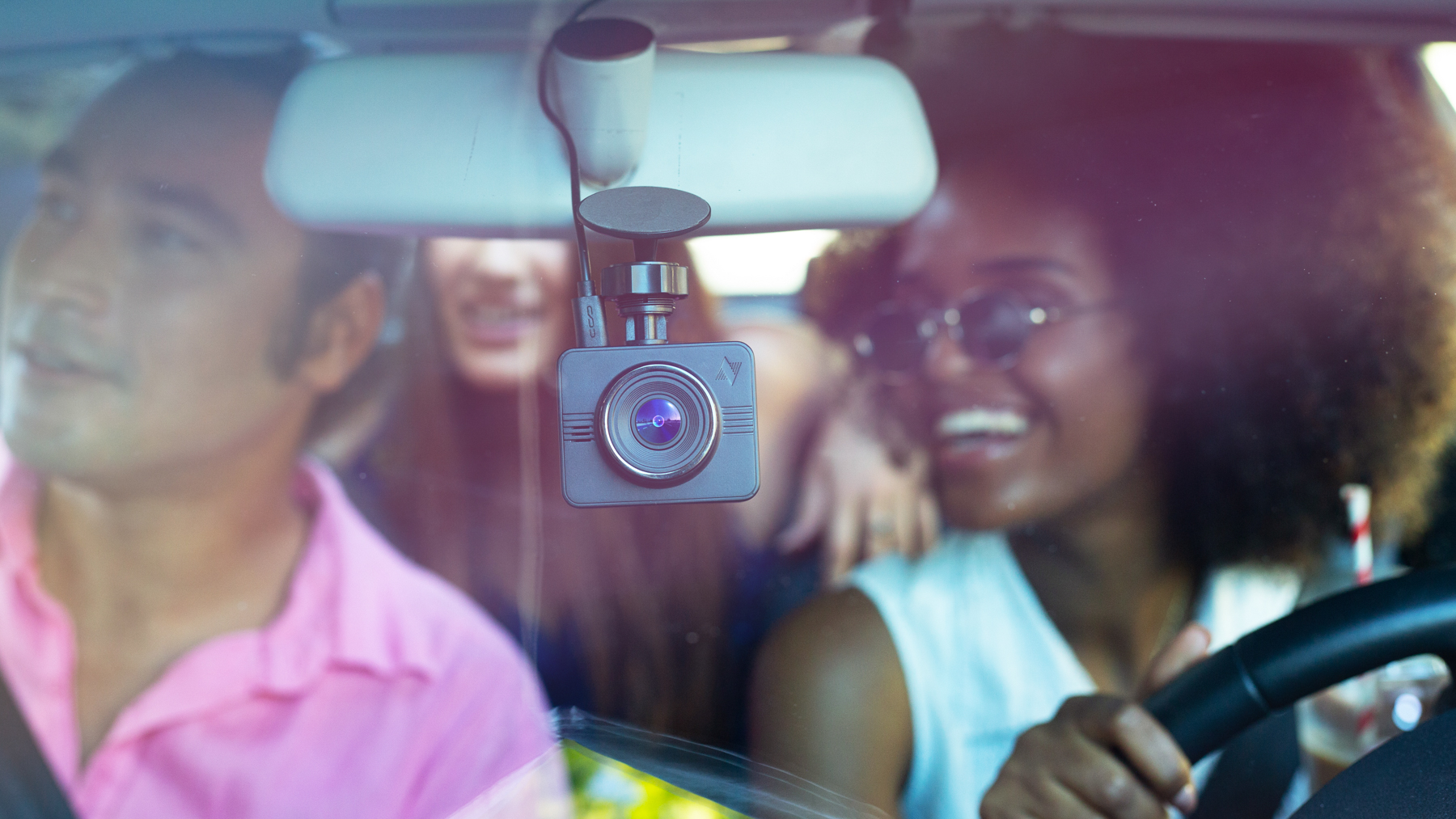
The best dash cam is the one that offers a perfect balance between performance, design and budget. The sweet spot between those three attributes will differ for every buyer, so in this guide our team of expert products reviewers has assembled a collection of the best dash cams we’ve ever used.
The products highlighted here all produce high-quality video. They are also well designed, built to last and represent good value for money. There are compact dash cams, budget dash cams, and models that manage to cram in every feature you could ever possibly need.
Dash cams have evolved rapidly in recent years, with 4K video now widely available. Other common features include Wifi and GPS, plus HDR, collision warnings, and even the ability to function as a security camera when your car is parked. Some also give the option of paying for cloud storage and other connected features, like the ability to make an automated emergency call after a crash.
If you want to know more about the different options before you choose, you can jump to our explainer on what to look for in a dash cam below.

Alistair is a technology and automotive journalist who has reviewed dozens of dash cams over the years. Whether they are $20 or $400, he has tried and tested dash cams from companies like Garmin, Thinkware and Nextbase, as well as lesser-known brands. Every model is fitted to his car and used as if his own before it is reviewed, and then judged if suitable as recommendations in one of our buying guides. With over a decade of experience, Alistair also writes for Wired, Forbes, T3, and The Independent. A typical week includes reviewing light switches, Lamborghinis, and everything in between.
The Quick List
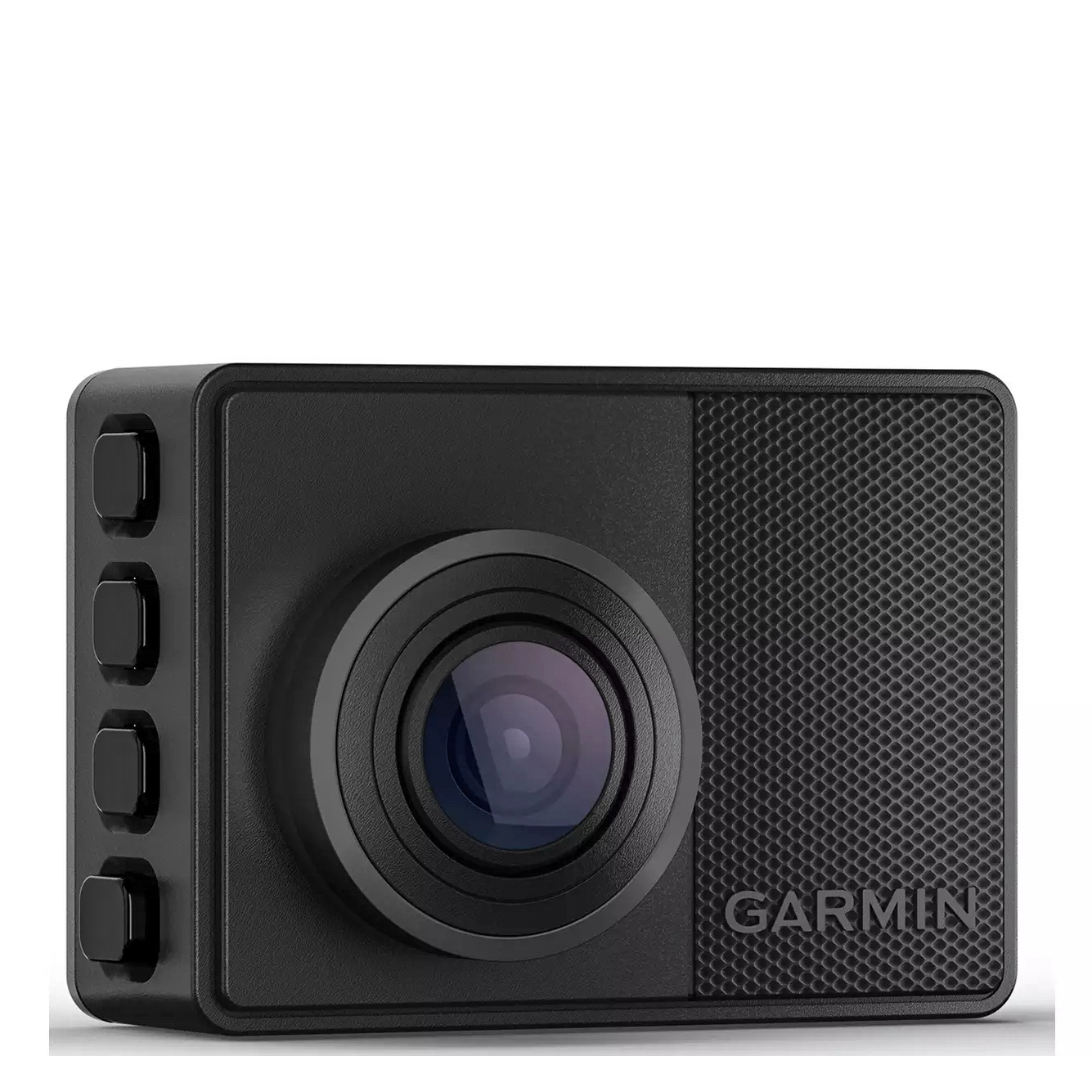
It is not the cheapest dashcam, but one we think is the best overall choice for a single-camera dashcam.
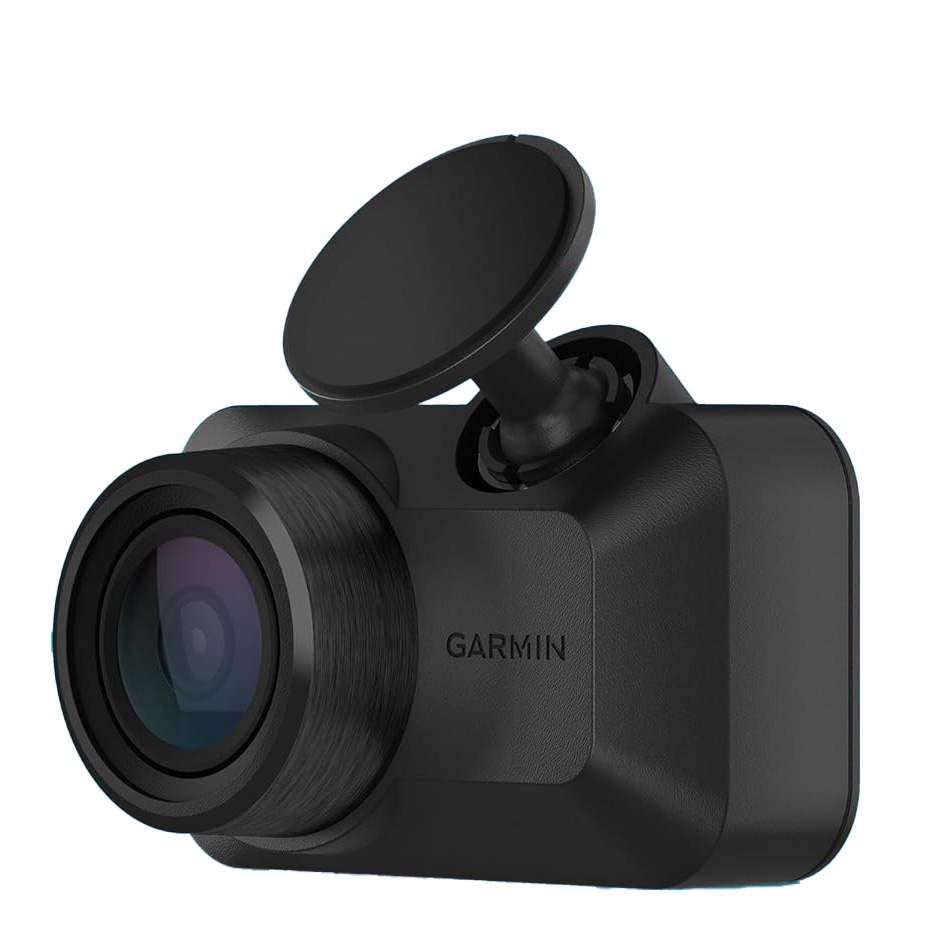
Now in its third generation, the Garmin Mini still sets the standard for a high-quality but tiny dash cam, that takes up minimal space on your windshield

Garmin’s latest flagship, the X310 is a feature-packed 4K dash cam, with HDR and a polarized lens for improved clarity.
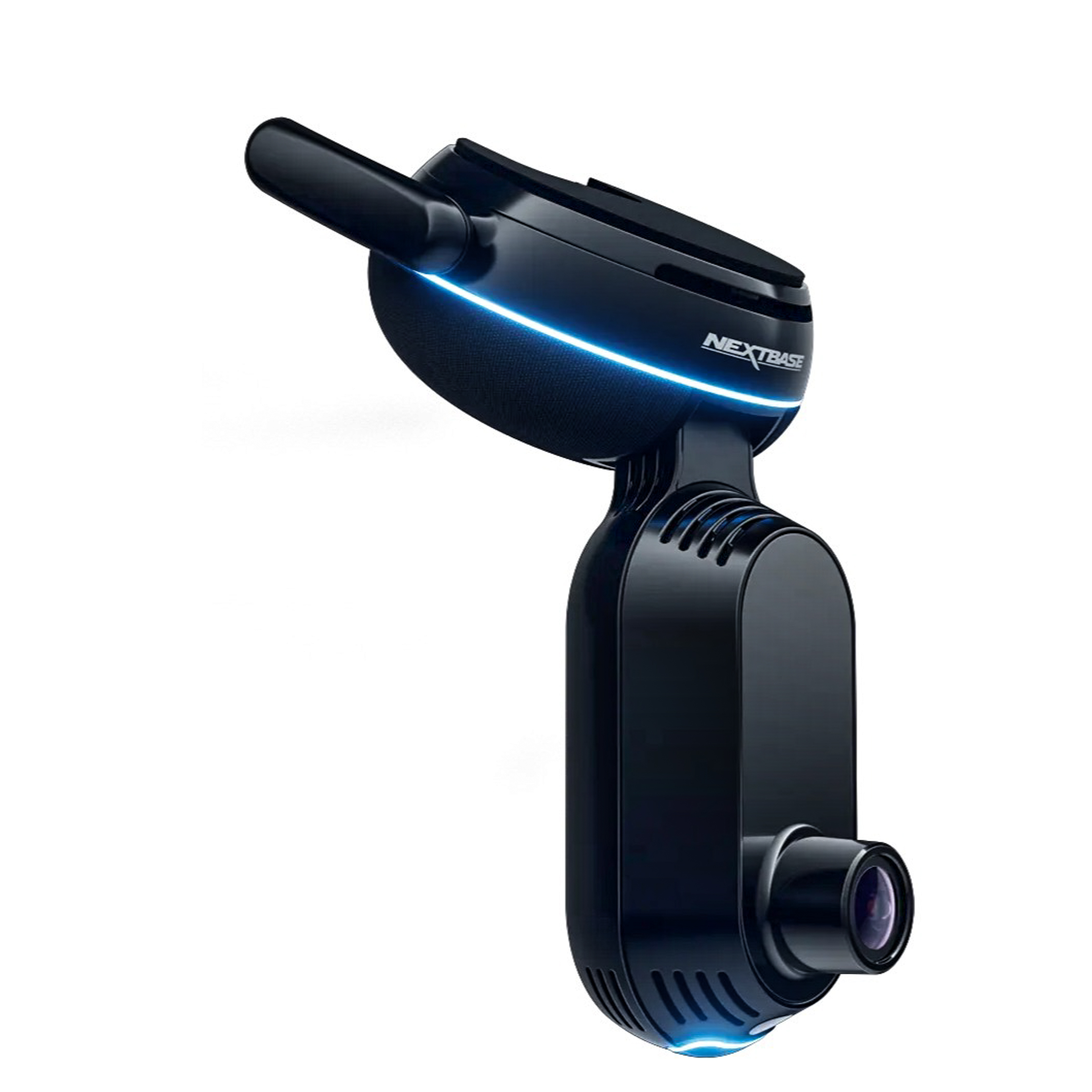
It doesn’t come cheap, but this 4K dash cam includes a 4G connection that turns it into an always-on security camera for your car, complete with intelligent person detection.
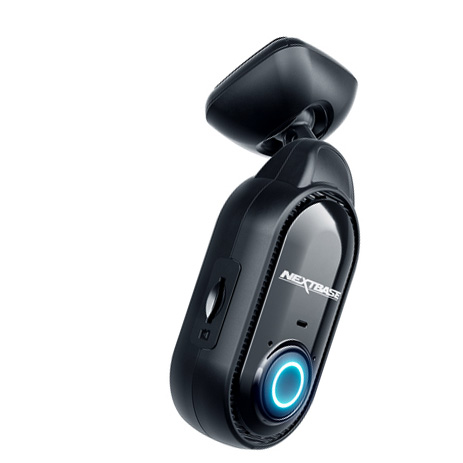
A high-quality compact dash cam at a fantastic price, the compact Piqo even has GPS too
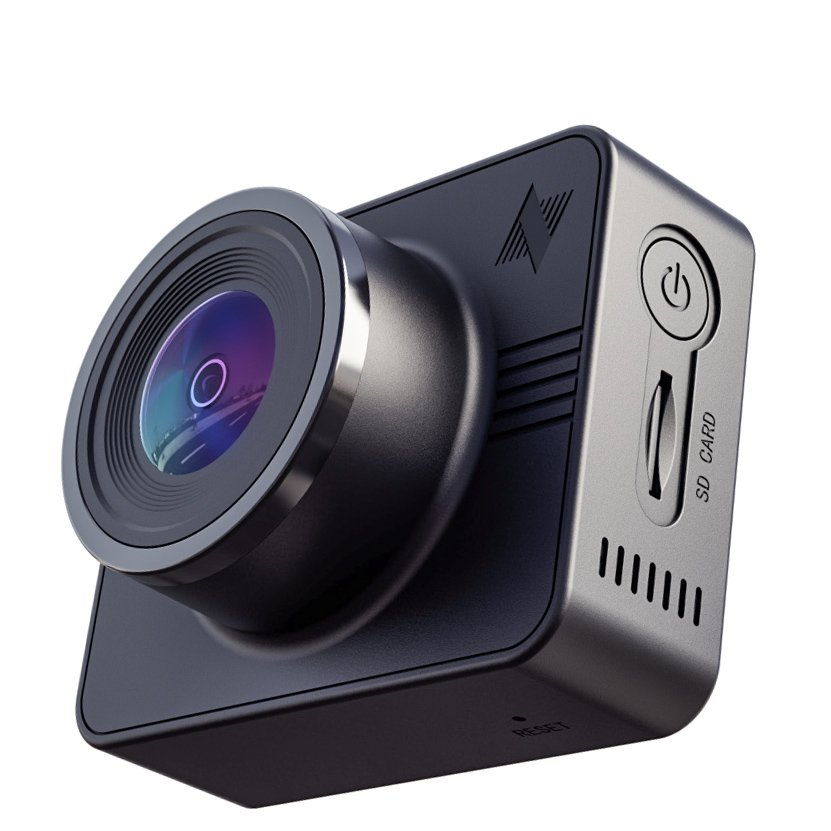
If you’re looking for a simple dash cam, then the Nexar Beam GPS is a fantastic option. It’s super easy and intuitive to set up and works extremely well with the connected smartphone app.
Load the next products ↴

With integrated storage, excellent 4K video, and a compact design that still manages to squeeze in a display, this is an impressive first product from dash cam newcomer Miofive.
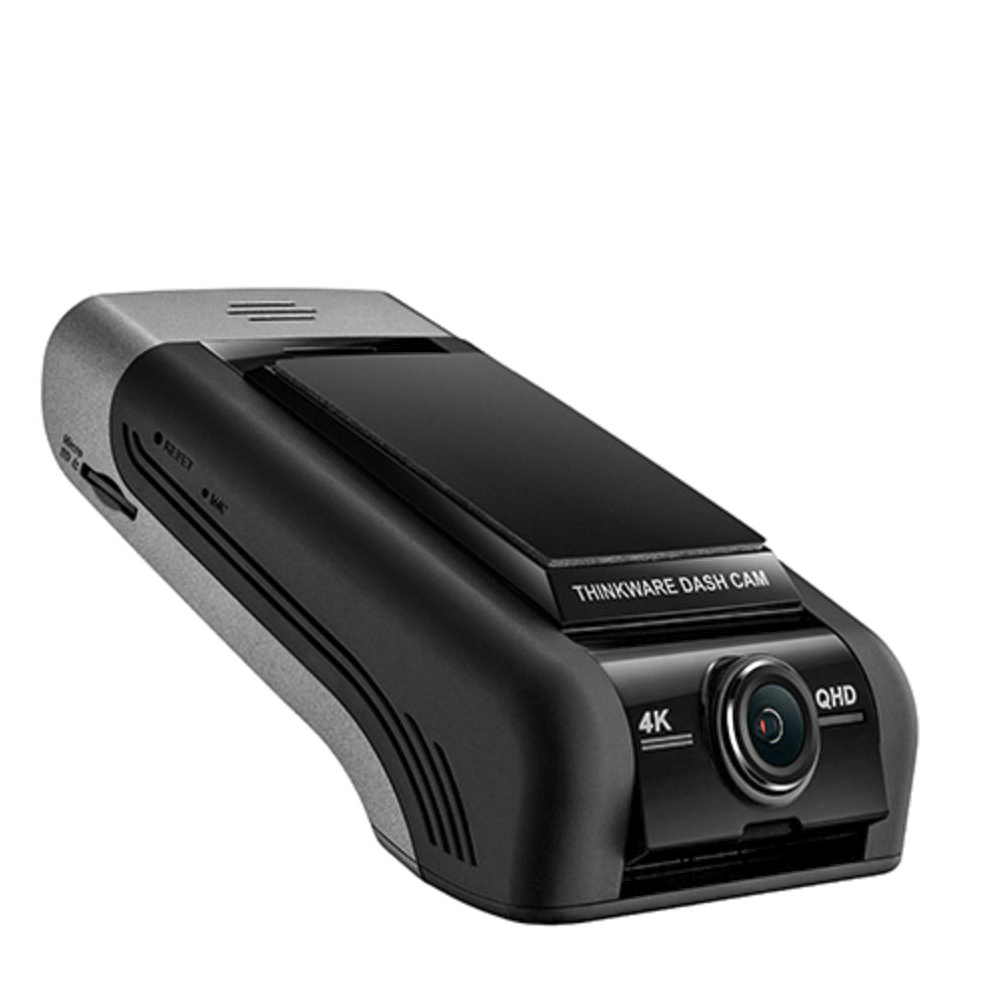
From 4K video and HDR, to a compact design that looks like it was fitted at the factory, there’s a lot to like here. Buy the hardwiring kit for a truly integrated experience.
The best dash cams we recommend
Why you can trust Digital Camera World
The best dashcam overall
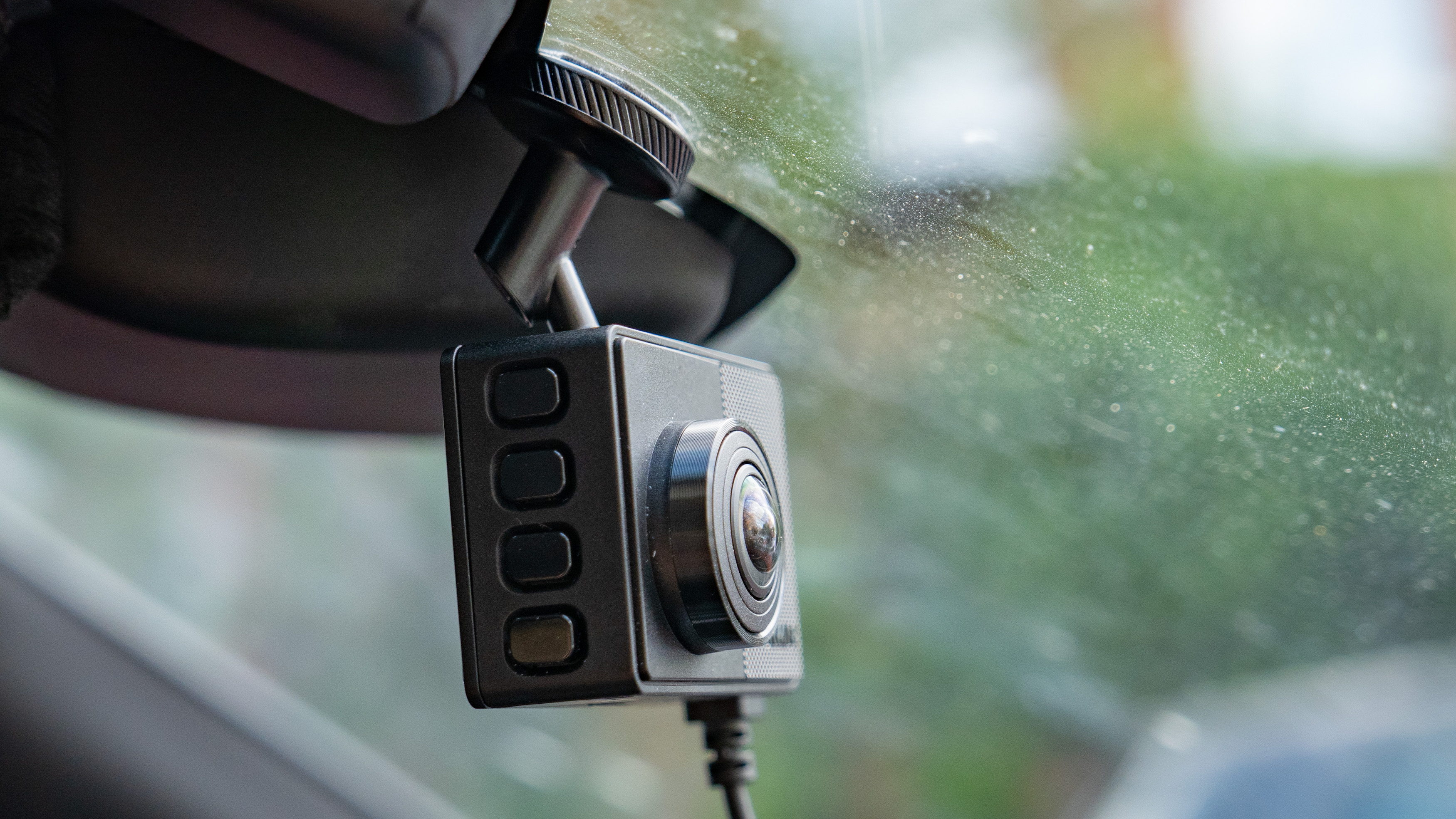
Specifications
Reasons to buy
Reasons to avoid
✅ You want a compact dash cam: the Garmin 67W itself takes up very little space, despite packing a 2in display, and its coin-sized windscreen mount is almost invisible.
✅ You want great video quality: with so many dash cams sticking to 1080, I like how the Garmin 67W records at 1440p, plus it has HDR and a super-wide, 180-degree lens.
❌ You prefer your dash cam without a display: the Garmin 67W’s 2in display can be useful for adjusting settings and seeing collision and speed limit warnings at a glance, but some drivers might find it distracting.
🔎 From its compact design and ease-of-use, to HDR video, wide lens, voice control and safety alerts, the Garmin 67W is a hugely impressive dash cam that gets everything right. It is more expensive than some, but if ever there were a dash cam fit for the ‘buy once, buy well’ mantra, this is it. ★★★★★
The Garmin 67W is no longer the newest dash cam on the block, but it’s still my favorite. This is because, for me at least, it strikes the perfect balance between cost, design, functionality, and performance. I especially like the compact dimensions and excellent magnetic windscreen mount, which takes up far less space than any other while still offering plenty of adjustability.
It’s now a few years since this dash cam launched, and I’m amazed that no one has copied the design of its super-simple windscreen mount, which incorporates a small, coin-sized metal disc that sticks to your windscreen, and onto which the dash cam mount attaches magnetically. A ball-and-socket joint means there’s loads of adjustability, but the dash cam still stays securely in place.
Then there’s the video quality, which can’t match newer, 4K dash cams like the Nextbase iQ or Thinkware U1000 on pixel count alone, but still produces fantastic 1440p footage with HDR through a wide, 180-degree lens. The Garmin also packs GPS, which adds speed and location data to videos, and there’s even space for a 2-inch display on the back for speed camera and red light camera alerts. It can be configured to issue a beep, intended to get your attention if you haven’t noticed the car ahead has set off.
I also like how well the Garmin’s voice controls work, which makes it easy to turn the microphone on and off, or manually save a portion of video, with a quick voice prompt. Quite frankly, the Garmin 67W is a masterclass in dash cam design. And even though it’s a few years old now, I still think it’s the very best.
Read more: Garmin Dash Cam 67W review
| Attributes | Notes | Rating |
|---|---|---|
| Features | GPS, Wifi, parking mode and even a battery for short cable-free journeys if you like, the 67W has it all. | ★★★★★ |
| Design | Attractive, compact and intuitive, but some prefer their dash cams without a screen. | ★★★★ |
| Video quality | Beyond HD but without the massive file sizes of 4K | ★★★★★ |
| Value | Lots of dash cams cost less, but few manage to offer such good value at this price point. | ★★★★ |
The best mini dashcam
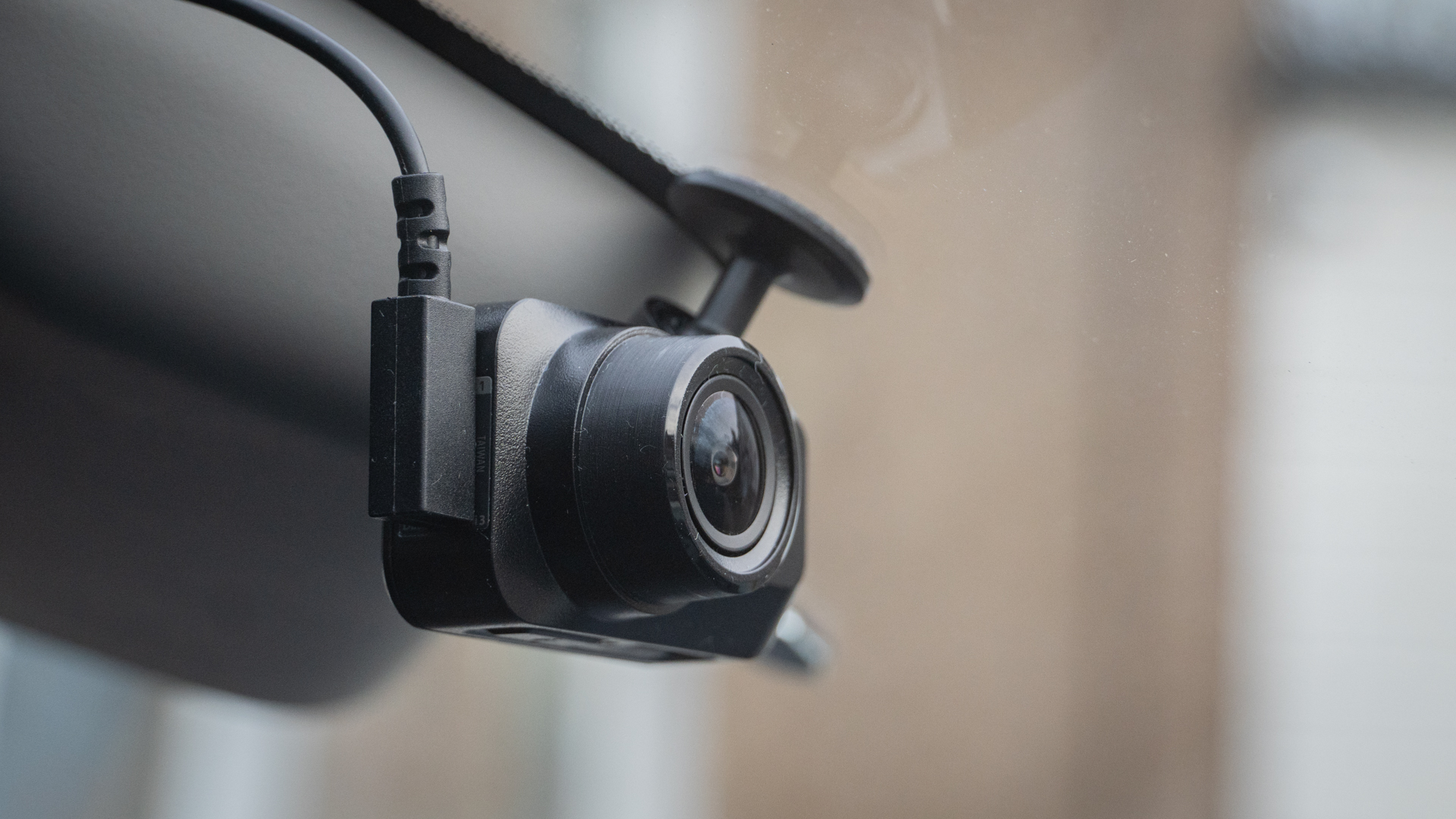
Specifications
Reasons to buy
Reasons to avoid
✅ You want a small dash cam: The Mini 3’s size is its biggest feature, and the main reason to buy it. It takes up very little space and practically disappears behind the rear view mirror.
✅ You don’t want feature overload: With its small size comes simplicity. There’s no distracting display and no invasive driver assistance features..
❌ You want a display: Recordings have to be transferred to your phone or computer, or uploaded and viewed online, sice there’s no screen on the dash cam itself.
❌ You want a second camera: Unlike some rivals, Garmin doesn’t sell an interior or rear-facing camera to attach to the Mini 3. You can sync up to four together, but each needs its own power supply
🔎 If you’re looking for a very small dash cam, this is the one to buy. ★★★★★
The third generation of Garmin Mini is, once again, a fantastic compact dash cam. It really is very small, and now has a horizontal form factor which I think makes it look even more compact. It still records high-quality Full HD video with HDR, just as before, but now there’s an integrated polarizing filter that helps cut down on windshield reflections.
As always, Garmin’s voice controls work well, and the optional smartphone app is a handy way to set everything up, but isn’t a necessity. Cloud storage, hardwiring and a parking mode are all available too (although hardwiring kits are sold separately, and Garmin’s cloud storage carries a subscription fee). Add all this in, and the Mini 3 feels like a properly grown-up dash cam, despite being absolutely tiny.
I reckon this is a five-star dash cam, even at its full retail price. But if you want to save a bit of money then the previous-generation Garmin Mini 2 is also very good and can be picked up for a fair bit less.
As ever, the Garmin Dash Cam Mini delivers great video quality from a truly tiny footprint, with a good smartphone app and the option to add new functionality via Garmin’s Vault cloud storage subscription. The integrated polarizing lens is a nice upgrade over the Mini 2, but if you own a previous generation of Garmin Mini, I recommend you stick with that.
Read more: Garmin Dash Cam Mini 3 review
| Attributes | Notes | Rating |
|---|---|---|
| Features | This isn’t a dash cam overflowing with features, but that’s to be expected. I wish the Mini 3 had GPS, but otherwise prefer Garmin’s simple approach to compact dash cam design. | ★★★★ |
| Design | When it comes to design, the Mini 3 absolutely nails the brief. It is tiny, yet looks premium and feels well made. It also has an equally small but highly adjustable windshield mount, and an integrated polarizing lens filter too. | ★★★★★ |
| Video quality | Full HD video with HDR at 30 frames per second is impressive for a dash cam of this size. | ★★★★ |
| Value | Despite its size, the Garmin Mini 3 carries a fairly high price tag. At $150 / £150, it is $30 / £30 more expensive than its very similar predecessor, the Mini 2. It is also undercut by the Nextbase Piqo | ★★★★ |
The best 4K dashcam
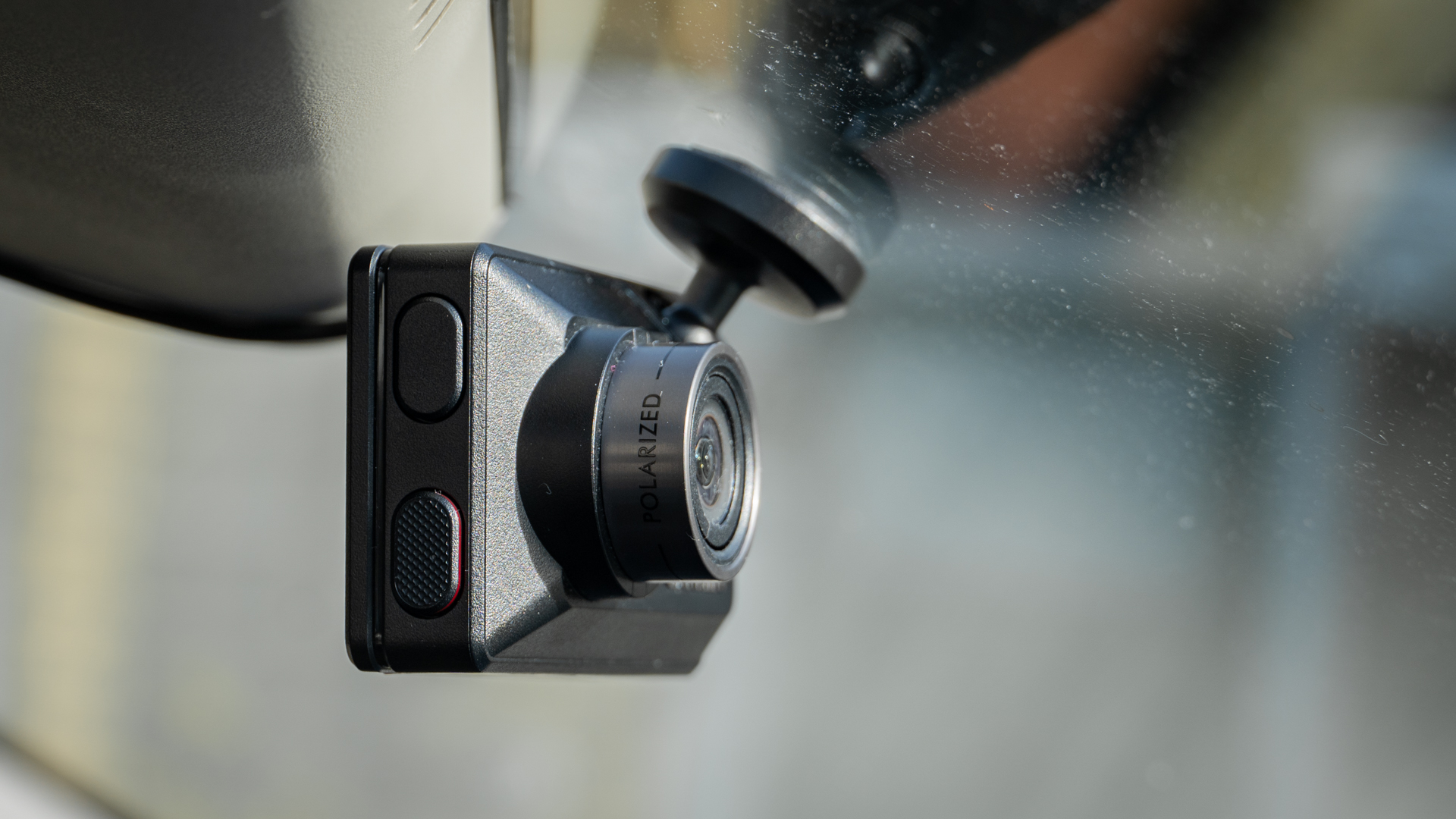
Specifications
Reasons to buy
Reasons to avoid
✅ You want excellent video quality: Take your pick between 4K at 30 fps or 1080p at 120 fps. Both deliver fantastic results, plus there’s HDR and good low-light performance too.
✅ You’d like a parking mode and remote surveillance: The former requires a hardwiring kit and the latter needs a subscription, but both show how the X310 can be expanded with extra functionality for those who want it.
❌ You’re on a budget
❌ You want a tiny dash cam
🔎 The Garmin X310 is a top-notch dash cam that more than lives up to its spec sheet. It produces high-quality 4K with HDR (or Full HD at an impressive 120 fps), plus there’s a 2.4-inch touchscreen for ease of use, Wifi, GPS, impressive nighttime recording, and an optional parking mode when opting for a hardwired installation. ★★★★★
My current favorite 4K dash cam is the Garmin X310. This is a flagship in every sense of the word, blending compact but premium design with useful features – including cloud storage and even the option of using the dash cam for remote surveillance of your car, via a subscription. Best of all is the X310’s video quality, which looks fantastic when using the 4K setting at 30 frames per second.
I also like how there’s the option to record 1080p Full HD at 120 frames per second, which produces very smooth footage that can be slowed down without a loss in quality. There’s also HDR for improved control over shadows and highlights, and GPS for adding speed and location data to your recordings.
As with all Garmin dash cams, the X310 uses the company’s wonderfully simple yet highly adjustable windshield mount, which attaches to the camera with a magnet. Driver assistance features include forward collision and lane departure warnings, plus a ‘go’ alert that sounds if you haven’t reacted to the vehicle in front setting off.
There’s even an integrated battery, but since it only has a life of up to 20 minutes, this is only useful for very short journeys.
It isn’t cheap, but the X310 is proof you get what you pay for.
Read more: Garmin X310 full review
| Attributes | Notes | Rating |
|---|---|---|
| Features | A feature-packed dash cam, the X310 offers 4K, HDR, Wifi, GPS, a touchscreen, parking mode and much more besides. | ★★★★★ |
| Design | Although not Garmin’s smallest dash cam, the X310 is still compact considering its flagship specification and performance. | ★★★★★ |
| Video quality | The X310’s 4K video looks fantastic, day and night. I also found the user interface to be responsive, files transfer quickly, and Garmin’s smartphone app works well too. | ★★★★★ |
| Value | It’s not a cheap dash cam. But that doesn’t mean it offers poor value for money. That said, I think Garmin’s similarly impressive Dash Cam 67W offers better value, despite being older. | ★★★★½ |
The best dash cam for security
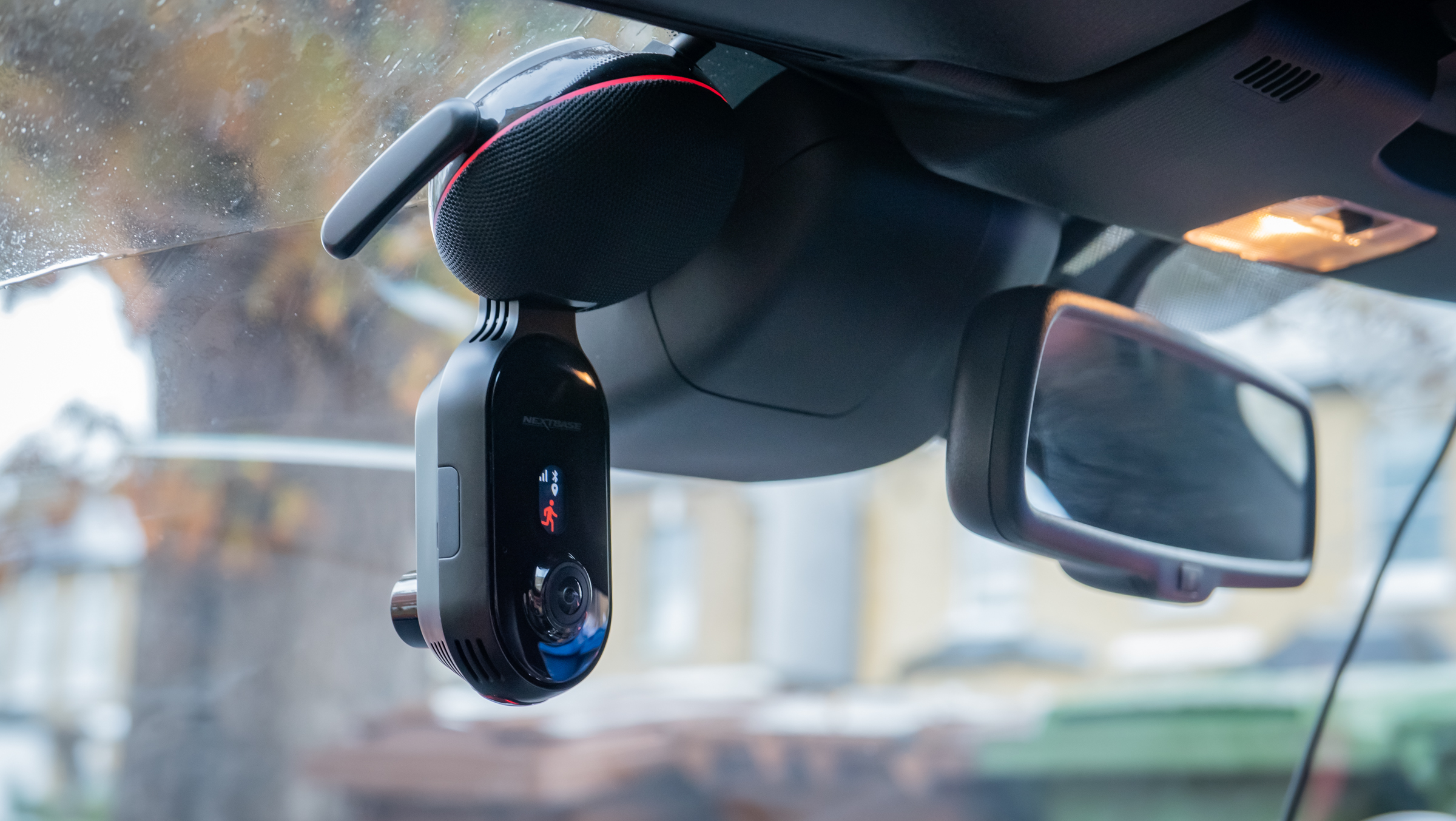
Specifications
Reasons to buy
Reasons to avoid
✅ You want a dash cam that doubles as a security camera: the iQ uniquely uses a 4G connection to alert you to suspicious movement near your car
✅ You want an interior view too: the iQ has an integrated interior camera, and an optional Full HD rear-view camera
❌ You’re on a tight budget: the Nextbase iQ is the most expensive dash cam I have ever tested.
❌ You have a small car: the iQ was too big for the small windshield of my Mazda.
🔎 The Nextbase iQ is the best dash cam you can buy right now. I love how easy it is to set up and how it can be powered from the OBD port for a hassle-free power source. A connected security camera is a great idea, but it's very expensive to buy and run. ★★★★½⯨
Only its high price and bulky design prevented me from giving the Nextbase iQ a full five stars. This is a dash cam that does it all, from 4K video and an optional rear camera, to the integrated interior camera and a 4G connection that turns the whole thing into an intelligent security camera for your car, the iQ is a formidable package.
I love how the included OBD II cable makes it easy to give the iQ a constant power supply (or it can be hardwired to the fuse box if you prefer), and I was impressed with how the camera sends an alert to your smartphone when it spots someone loitering near your car.
I also thought the 4K video it produces is top-notch (although I’m yet to try the cheaper 1080p and 2K/1440p versions) and I like how the iQ can double as an alarm if your car is broken into.
In my review I was less keen on the massive price, and how Nextbase failed to include all of the iQ’s software features at its launch back in late-2023. The company promises regular over-the-air software updates.
I also found the iQ isn’t well suited to small cars with compact windshields, as its unusual design takes up a fair bit of space. It was usable in my Mazda MX-5 – a tiny car, I admit, and known as the Mazda Miata in the US – but the iQ’s bulk meant it obscured too much of the view ahead for my (and my passenger’s) liking.
Read more: Nextbase iQ review
| Attributes | Notes | Rating |
|---|---|---|
| Features | 4G is the big one here, turning this dash cam into a security camera for your car. | ★★★★★ |
| Design | Chunky but well made, the Nextbase iQ manages to pack an awful lot into its big body. | ★★★★ |
| Video quality | 4K video quality is excellent during the day and at night, while interior footage captutred in Full HD with infrared night vision is also top-notch. | ★★★★★ |
| Value | There’s no getting around just how expensive the Nextbase iQ is, especially when selecting the 4K model and adding a rear camera. Then there’s the subscription cost. | ★★★ |
The best budget dashcam
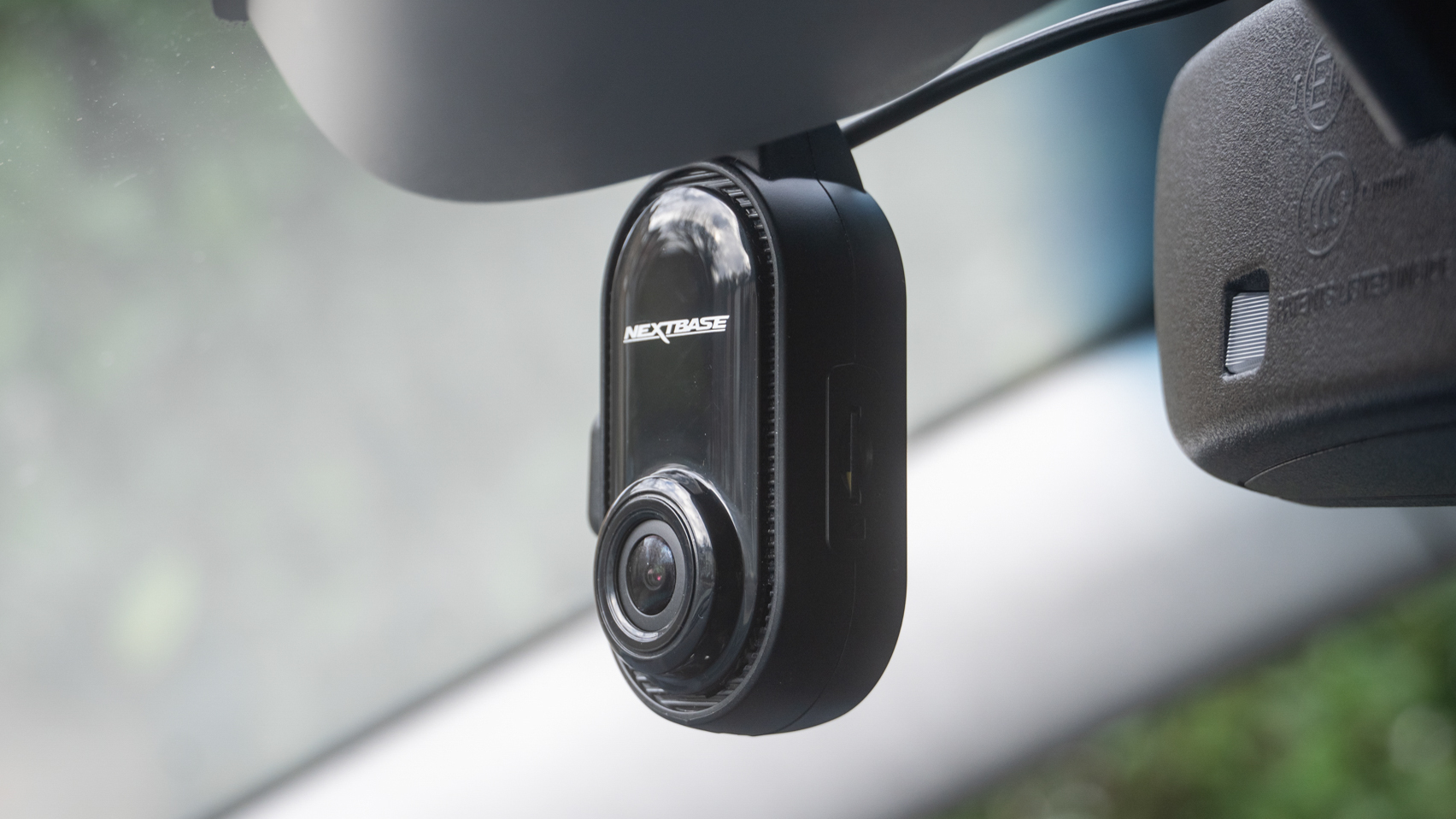
Specifications
Reasons to buy
Reasons to avoid
✅ You want a compact dash cam: It’s a bit larger than the Garmin Mini, but still packs a lot into a remarkably small housing.
✅ You’re on a budget: For us, there is no better budget dash cam available right now. I was particularly impressed by how it has GPS for a two-figure price tag.
❌ You need a display: Small dash cams don’t have displays. But I wish the smartphone app were better, as its interface is clunky and video transfers are slow.
🔎 The Piqo is an excellent compact dash cam that produces high-quality video for a low price. It is easy to set up and use, is almost completely hidden once installed, and benefits from optional extra features like a parking mode and emergency SOS calling. ★★★★½
There’s a new budget dash cam in town, and for a change it comes from one of the biggest names in the business. The Nextbase Piqo took us by surprise when it landed in late-2024, but quickly won us over with its compact design, ease-of-use and fantastic value.
The hardware feels well-made, and there are additional features like a parking mode, emergency SOS calling and a guardian mode for those who want them, although the latter two require a subscription. At $129.99, I think it offers good value, but at launch this was cut to just $99 / £99, making it a bit of a bargain – especially compared to the $150 Garmin Mini 3.
Especially impressive is how the Piqo has GPS, despite the low price, as that’s something the pricier Garmin misses out on. Dash cams use GPS to add location data and speed to your recordings.
The Piqo performed well during our testing. However, I was disappointed by the fairly sluggish smartphone app, and how recordings took a long time to transfer to our smartphone.
Overall though, this is a great dash cam for buyers on a budget.
Read more: Nextbase Piqo review
| Attributes | Notes | Rating |
|---|---|---|
| Features | Compact dash cams tend to be light on features, but for the GPS-equipped Piqo I think Nextbase has struck a great balance between price, design and functionality. | ★★★★½ |
| Design | It isn’t quite as tiny as some other dash cams, but the Piqo is still seriously compact. It looks and feels premium too, with an aesthetic borrowed from Nextbase’s iQ dash cam. | ★★★★★ |
| Video quality | The dash cam works very well; it is easy to use and produces high-quality video. However, the smartphone app is sluggish and video transfer speeds are particularly slow. | ★★★★½ |
| Value | The 1K version of the Piqo in particular offers fantastic value for money. It looks and feels premium, records good quality video with GPS. | ★★★★★ |
The best dashcam for ease-of-use

Specifications
Reasons to buy
Reasons to avoid
✅ You want bang for your buck: this is a competitively priced and offers plenty of value for money.
✅ You want great smartphone integration: the phone app is often where dash cams struggle, but not here. The Beam's app worked very well – that’s a relief since its internal storage makes using the app to transfer video mandatory.
❌ You value aesthetics: the Beam itself isn’t that offensive, but the clutter created by the suction cup, GPS module and camera cable isn't ideal.
❌ You want a display or touchscreen: there's no screen, so there’s no way to view footage or change settings without using the app.
🔎 I found the Nexar Beam a mixed bag. The unit itself looks and feels good, but is let down by the clumsily designed suction cup and GPS antenna. Get over that, and the user experience is among the very best available today. ★★★★⯨
Although not quite as small as the Garmin Mini 2, the Nexar Beam is a nicely compact dash cam with plenty of great features. During my time with the Beam I found it easy to set up and felt the hardware was of high quality. The lens could be a little wider, at just 135 degrees, but the Full HD video the Beam produces looks great.
Also impressive is the Beam’s smartphone app. This is almost always the weakest link of any dashcam, but Nexar has done a great job to produce an app that is nicely designed and a pleasure to use. My only complaint here is how, because the Beam connects to your phone over WiFi, you can’t use wireless Apple CarPlay or Android Auto at the same time, since they also use WiFi to connect to your car. Plug your phone into the car, however, and this issue goes away.
I was pleased to see GPS included, but the way the antenna forms part of the windscreen mount isn’t the most elegant hardware solution. Factor in the suction mount, and how the dash cam itself plugs into the mount with a short cable, then a second cable heads from the mount to your vehicle’s power socket, and the aesthetics take a hit. All that said, I think the Beam represents good value for money, and the nicely designed app makes it a pleasure to set up and use – a rarity among almost all other dash cams.
Read more: Nexar Beam review
| Attributes | Notes | Rating |
|---|---|---|
| Features | GPS and Wifi are the big features here, along with a great phone app. | ★★★★ |
| Design | Nexar could have done a better job with the suction cup and GPS antenna | ★★★ |
| Video quality | Full HD at 30 frames per second is table stakes these days, but video from the Nexar Beam looks particularly good. | ★★★★ |
| Value | The good video quality, relatively compact design and excellent smartphone app make it feel like good value. | ★★★★ |
The best value 4K dash cam

Specifications
Reasons to buy
Reasons to avoid
✅ You want 4K on a budget: Recorded at 30fps, 4K footage looks great, with plenty of detail, and good exposure balance in tricky lighting situations.
✅ You want a small dash cam with a screen: this does a great job of squeezing a 2.2in screen into a compact package.
❌ You prefer saving footage to removable memory card: this dash cam uses internal storage, so you need to transfer recordings via Wifi and Miofive’s app.
🔎 The Miofive 4K is a lesson in giving lesser-known brand names a chance. I hadn’t heard of Miofive before, but I'm impressed by the hardware design and its capabilities – and it's great value for money. ★★★★½⯨
You might not have heard of Miofive, but believe me when I say it’s a company worthy of your attention. Its first dash cam, simply called the 4K Dash Cam, shoots video in 4K (who’d have guessed?) and packs a useful 2.2-inch display into a compact body.
Interestingly, it’s one of the very few dash cams to shun a microSD card in favor of 64GB of integrated storage. This saves the expense of getting a card, but does mean that memory is not expandable. Recordings need to be accessed via a smartphone app and speedy 5GHz WiFi - and then can be stored offline or in the cloud, should you want to save them.
There’s even a battery for wireless use, but it’s only good for a few minutes of recording and, therefore, very short journeys. Plug in using the included 12V socket cable or opt for hardwiring to the fuse box for a neater, more permanent installation.
I like the premium feel of this dash cam – especially considering the price – as well as its high video quality and compact dimensions, despite the screen.
Read more: Miofive 4K Dash Cam review
| Attributes | Notes | Rating |
|---|---|---|
| Features | Wifi, GPS and a display are the biggest features here, as well as optional hardwiring and, of course, the option for 4K video | ★★★★★ |
| Design | Surprisingly compact for a dash cam packing 4K video and a display; nicely designed windscreen mount, too. | ★★★★ |
| Video quality | Great video at 4K resolution and 30 frames per second. Lens a touch narrow, at just 140 degrees, and 4K file sizes can be massive, but overall the Miofive performs well. | ★★★★ |
| Value | Fantastic value, especially considering the 4K sensor and inclusion of both GPS and speedy 5GHz Wifi. There’s a generous 64GB of internal storage, too. | ★★★★★ |
The best hard-wired dashcam
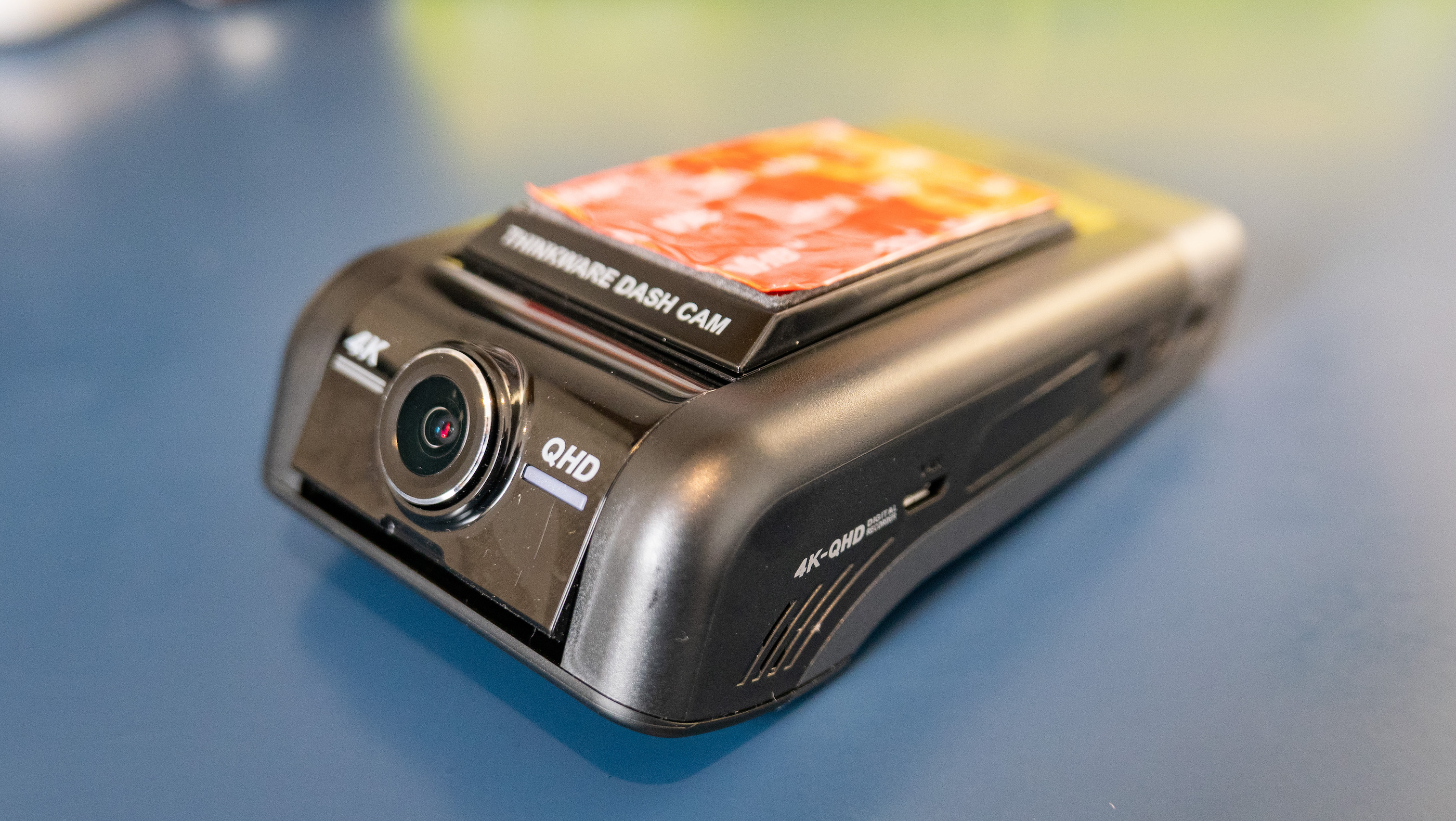
Specifications
Reasons to buy
Reasons to avoid
✅ You want a factory-fit aesthetic: this is a dash cam that looks like it came with the vehicle.
✅ You want a high frame rate: very few dash cams record footage higher than 30 frames a second. While 4K is great, I prefer to drop the resolution to 1440p and boost the frame rate to 60 fps.
❌ You want a screen: This is a no-display dash cam, so if you want an LCD for viewing footage, tinkering with settings or receiving alerts, this isn’t for you.
❌ You’re on a budget: this is one of the most expensive dash cams I’ve tested.
🔎 The Thinkware U1000 is great for drivers who want a hardwired dash cam that records high-quality 4K video. The discreet design makes it look like a factory-fit accessory. ★★★★½
If you want a dash cam that looks as if it was installed the day your car was built, the Thinkware U1000 is for you. Its lack of a display keeps the profile nice and low, while the rest of the design makes it look factory-fit rather than an aftermarket afterthought.
As well as the suitably stealthy design, the U1000 boasts 4K video with HDR that in my testing I found to be excellent. I was also impressed to see the option of lowering the resolution to 1440p and boosting the frame rate to 60 fps, producing smoother video that has the potential to bring more clarity to crucial details like street signs and vehicle license plates. GPS is also included, along with the option to connect a rear-facing camera.
Although not mandatory, the U1000 lends itself to hardwire installation more than most other dash cams I’ve tested. My review sample was supplied only with the hardwiring kit, which I swapped out for a 12V plug to make installation and removal easier.
If I were you (and not regularly reviewing different dash cams), I’d stick with the hardwire kit, seek out professional installation, and enjoy a dash cam that feels like it came with the car.
Read more: Thinkware U1000 review
| Attributes | Notes | Rating |
|---|---|---|
| Features | 4K video is a standout feature here, along a streamlined design, GPS and option for OBD power | ★★★★ |
| Design | It’s not the smallest dash cam, but its slim, windshield-hugging profile makes it a discreet addition to your car interior. | ★★★★ |
| Video quality | Excellent 4K footage at 30fps, or the option to shoot 1440p at 60fps | ★★★★★ |
| Value | A dash cam recording at 4K was never going to be cheap, but I still think the U1000 represents good value for your money. | ★★★★ |
How to choose the best dash cam for you
When purchasing tech, budget is always a key consideration. The dash cam market has expanded significantly in recent years, with prices ranging from $20 to $1,000. I’ve tried a $20 dash cam, and as expected, the video quality was poor. It’s best to avoid these and aim for a model priced around $100 or more.
Once you’ve settled on a budget (around $200 is the sweet spot), the next priority is video quality. This includes resolution, frame rate, HDR support, lens viewing angle, and night-time performance, as well as whether you can trade 4K resolution for a higher frame rate in HD.
After that, it’s about personal preferences. Do you want a dash cam with features like speed camera alerts and Alexa voice control, or are you looking for a straightforward model that simply does the job? Consider whether you need a rear-facing camera as well.
Finally, think about the design of the dash cam. Larger models can make small cabins and windshields feel cramped and cluttered. Also, decide whether you prefer a plug-and-play system or a hardwired installation.

Do I need 4K resolution?
4K video, also known as Ultra HD or 2160p resolution, offers the potential for more detail. However, we’ve tested some 4K dash cams that deliver poorer video quality than their Full HD (1080p) counterparts. This is because factors such as the size of the imaging sensor, frame rate, and the camera’s ability to handle different lighting conditions play just as crucial a role as resolution.
If you're considering a 4K dash cam, we recommend proceeding with caution. Try it out if possible, evaluate the video quality carefully, and only then decide if it’s worth the investment. You may find that a dash cam with 1080p or 1440p video (like our top pick, the Garmin 67W) offers better overall video quality than one shooting in 4K.
Do I need to run my dash cam off the car battery?
There are three ways to power a dash cam. The least common option is using the dash cam's own battery, but these typically last only about 30 minutes (as with Garmin dash cams), so it's best to disregard this choice altogether.
The next option is plugging the dash cam into your car's 12V port, often referred to as the lighter socket. This powers the dash cam when the car is on and is usually strong enough to charge a smartphone simultaneously. Many dash cams include a 12V adapter with two USB ports—one for the dash cam and one for your phone.
The final option is hardwiring the dash cam directly to your car’s battery. This provides a constant power supply and enables parking mode, where the dash cam automatically starts recording if it detects a collision, even when the car is off and parked. Hardwiring typically involves connecting the dash cam to your car’s fuse box and requires professional installation. Once installed, the cables are usually hidden behind your car’s interior panels, giving a cleaner, more seamless look compared to a cable hanging down to the lighter socket.
Some dash cams can also be powered via the car’s OBD II port, typically located under the steering wheel, which provides a continuous power supply.
Is the lens viewing angle important?
Dash cam lenses typically offer a field of view between 140 and 180 degrees. The wider the lens, the more it can capture, increasing the chances of recording incidents happening on the side of your car.
While a wider lens is generally preferable, it's important to note that it can cause distortion. Objects in the center of the frame may appear farther away and smaller compared to a narrower lens, which could affect the clarity of certain details in your recordings.
Do I need to pay a subscription to use a dash cam?
Generally, no, most dash cams do not require a subscription to function. However, many offer additional features for a monthly or annual fee. One such feature is cloud storage, where recordings are automatically uploaded and can be accessed from your phone or computer. To use cloud storage, a dash cam needs an internet connection, which can be provided through your smartphone or a nearby WiFi network.
A few dash cams, like the Nextbase iQ, come with their own 4G connection. In this case, a monthly fee is required to use the 4G service, which enables video uploads to the cloud and allows the iQ to function as a remote security camera, accessible via a smartphone app, much like a video doorbell.
Do I need more than one camera?
Sometimes the hazard is from behind, so a rear-facing dash cam can be very useful. We have a separate buying guide to the best front and rear dash cams. Some front-facing dash cams come with an optional rear camera upgrade.
Some drivers, and particularly those who make a living carrying passengers, will want a dashcam that also records the vehicle's interior. Our best Uber dashcam guide recommends the best options for this. If you want a front, rear, and interior camera check out our guide to the best three-channel dash cams.
Do I need a dash cam with GPS?
GPS is a valuable feature to have in a dash cam. It allows you to add location and speed data to your video recordings, which could be crucial in proving your innocence after a collision. GPS also integrates with the emergency SOS feature found in some dash cams, like the Nextbase 622GW. This function automatically makes an emergency call and shares the vehicle’s location if the driver is unresponsive after a serious impact.
What other features should I consider?
High Dynamic Range (HDR): Common in digital photography, TV, and cinema, HDR helps dash cams retain more detail in scenes with both bright areas (like the sky) and dark shadows (such as the road on a gloomy winter afternoon). Dash cams with HDR typically produce clearer, more detailed footage than those without it.
WiFi: WiFi is convenient for transferring videos directly from your dash cam to your smartphone, eliminating the need to remove the microSD card and insert it into a computer. It can also be used to connect your dash cam to your phone’s 4G or 5G data services.
Night Vision: Most dash cams come with night vision, usually producing grayscale footage with the help of infrared sensors. Some models offer color night vision, but these tend to be more expensive.
Driver Assistance: Some dash cams provide alerts if you unintentionally cross lane markings or approach speed cameras. Others notify you when the vehicle in front starts moving. While these features can be helpful, they can also be unreliable or distracting. It's worth doing your research to decide if these features are something you really need.
Voice Control: Certain dash cams, like those from Garmin, allow voice commands such as “Hey Garmin, turn off the microphone” or “Hey Garmin, save the video.” While useful, voice control isn’t something you’ll likely use often. The Nextbase 622GW, for example, includes Alexa integration, which can be more beneficial if you don’t already have a voice assistant in your car. Note that Alexa requires your smartphone’s data connection to work.
How we select the best dash cam
Our favorite dash cam, the Garmin 67W, strikes a fantastic balance between price, performance and design. Itr doesn’t have 4K video, but offers a high frame rate at 1440p resolution, a wide lens (the widest of any dash cam we’ve used, in fact), voice controls that actually work, and a design that is brilliantly compact, with a great windscreen mount. It’s our favorite because it excels in almost every area, and even though it isn’t the newest, we think it’s the best option for most people.
We’re big fans of the Nextbase iQ and how it uses a 4G connection to act as a security camera. We also love the iQ’s OBD cable, which gives it a constant power supply without the hassle of hardwiring it to the fusebox. But the price is very high, the 4G connection can be patchy, and I found the dash cam simply too large for my small car.
How we test best dash cams
We use every single dash cam in our own car before reaching a verdict. Only if it’s good enough will the dash cam appear in a buying guide like this one, and to get there it has to have impressed us with its video quality, design, ease-of-use and features.
We can’t hardwire every model we test, but we can at least position them correctly in our car – installing the interior and rear cameras too, if applicable – and power them from the 12V socket or OBD port, just as many buyers would. Their features are tested and their video recordings are transferred to our computer and analyzed before we reach a verdict. Naturally, we cannot test a dash cam’s ability to sense a collision.
Get the Digital Camera World Newsletter
The best camera deals, reviews, product advice, and unmissable photography news, direct to your inbox!
Alistair has been a journalist since 2011 and used to be Deputy Technology Editor at IBTimes in London. His specialist tech subjects include smart home gadgets, phones, wearables, tablets and dashcams. He is the host of The AutoChat Podcast.
